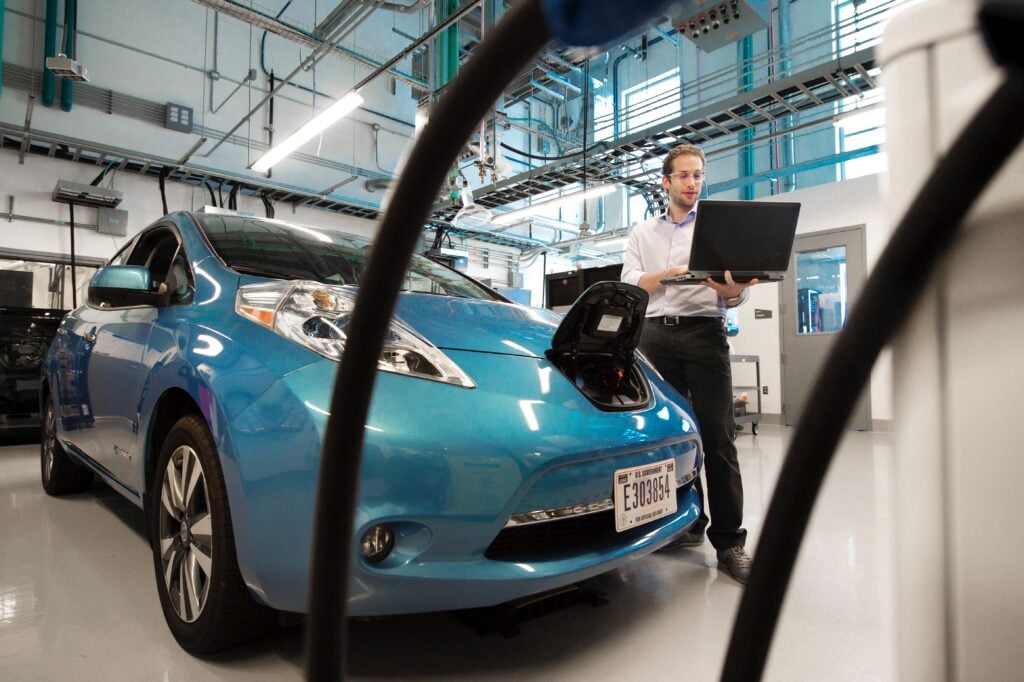We still don’t have a plan for switching to electric vehicles (promised in June 2020, now sometime in 2021) but ARENA is working on preparing the network for growth in EV uptake with a $2.9 million trial.
150 smart chargers will go into residential, commercial and industrial properties across NSW, Vic, Qld and SA, remotely monitored and controlled with the aim of minimising their impact on the grid. They will do this by encouraging consumers to charge when renewables are strongest and wholesale electricity prices are low. A win-win solution (although there are questions about the effect on batteries).
We want to get people thinking about EVs as more than just a car and saving on petrol, they will double as a battery storage in the home and be connected to virtual power plants or used for grid stabilisation, all of which will significantly reduce payback periods and improve the economics of EV ownership for many Australians.
Tony Lucas, Origin CEO
If all 19 million Australian vehicles were electric and they all charged at once there would be strife. With only 16,000 EVs on the road, we are a long way from causing problems on the grid any time soon but it is crucial to plan.
The Prime Minister’s coal-wielding, renewable energy and EV tirades might appeal to some voters but, like most of his tirades, it’s political. Back-down will be embarrassing but it’s inevitable and urgent.

The big issues for people wanting to switch from fossil fuels are price and availability of EVs, lack of fast chargers along long transport routes and no plan or emission standards.
This means EV manufacturers are avoiding Australia like the pandemic.
A long list of EVs were said to be coming to Australia in 2020. The Kia e-Niro was set to launch in Australia but is now on hold because prospects are better in other countries where incentives and standards are in place. Likewise the Volvo Polestar.
The Government’s 2019 Climate Solutions Package says: An electric vehicles strategy is expected to reduce emissions by up to 10 million tonnes by 2030. That’s less than 10% of all transport emissions – hardly an ambitious target when countries like Norway are already there. In any case, Australia signed up to 26-28% reductions in emissions by 2030 under the Paris Agreement.
In August the Bureau of Infrastructure, Transport and Regional Economies modelling said the percentage of new EVs sales will leap from 0.6% in 2020 to 8% by 2025, 27% by 2030, and 50% by 2035 but why so slow?
There are around 1 million new vehicles sold each year so 27% by 2030 is only adding 270,000 EVs to the fleet leaving 730,000 new vehicles using fossil fuels for another decade.
If all new vehicles sold were electric, we could achieve 100% by about 2040 and why not?
Vehicle turnover is fairly consistent so setting standards for new vehicles that only EVs can meet has to be one of the easiest ways to reduce emissions. Prices of EVs are tipped to come down, ‘fuel’ costs will be far lower for consumers than for petrol and diesel and 70MT of emissions a year will be avoided.
Fascinating facts:
- One EV battery typically contains as much energy as an average household uses over 2-4 days and can react to events in a tenth of a second
- If all of Australia’s 19 million vehicles were electric they would store more energy than nine Snowy 2.0s or more than 20,000 Tesla Big Batteries.
- Australia has one of the lowest rates of EV ownership in the OECD.
- Australia’s emissions from transport are projected to be 82% higher in 2030 than they were in 1990
Photo by Marc Heckner on Unsplash

